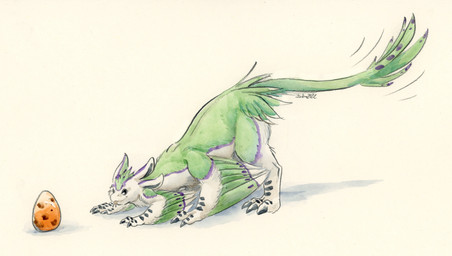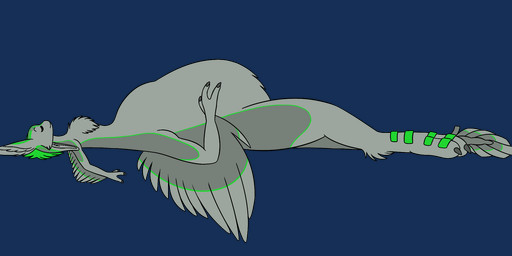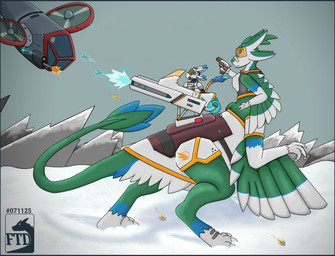
Species: avali taur
post #2236182 post #3949669 post #5652754 post #5771324 post #4428520 post #3663631
A taur based on avali. Example. Since avali are a made-up species, there is no real-world feral creature to define the "standard" body shape. However, a bipedal taur is a common choice for alignment with birds and raptors. https://avali.fandom.com/wiki/Avali_Taurs
Posts tagged avali_taur should also be tagged avali, avian_taur, and usually bipedal_taur, except for the rare quadrupedal avali taurs.
Body Shape
Avali taurs feature bipedal lower bodies inspired by bird-like or raptor-like anatomy. Since avali do not canonically have a feral form, other body shapes would also be acceptable taur adaptations of avali, such as 4 legs like most taurs have. However, bipedal taurs are common for bird taurs and dinosaur taurs. Since avali are inspired by birds and raptors, specifically dromaeosauridae, it makes sense that an avali's feral form would be bipedal, and therefore a taur form would be a bipedal taur.
Avali taurs retain the feathers, coloration, and general aesthetic of standard anthro avali. Their upper body is that of a typical anthro avali in both size and proportion, whereas their lower body is significantly larger than the upper body, typically twice as long or wide, or around 8 to 10 times the volume.
The taur's lower half has 2 hindlegs optimized for running, and 2 large winged forelimbs, which are about twice the length of their upper arms. The lower arms feature large wings suitable for gliding short distances, as well as providing balance and enabling agile maneuvers at high speeds. Their tails further enhance stability during movement.
Locomotion
Avali taurs are adept runners whose bipedal body structure supports swift and sustained movement, similar to terrestrial raptors. Their sizable lower limbs, winged arms, and sturdy tails provide exceptional balance and agility, allowing avali taurs to perform sharp turns, rapid acceleration, and precise maneuvering with ease. Additionally, their winged forelimbs allow for limited gliding, aiding traversal of uneven terrain or short gaps.
Due to their larger muscular structure and efficient physiology, avali taurs demonstrate notably greater stamina and endurance compared to standard anthro avali, making them ideal for prolonged periods of intense physical activity. However, this increased size and ability comes at the cost of increased energy requirements, requiring larger amounts of food. As their upper body's mouth remains standard avali size, avali taurs typically require longer feeding sessions or more frequent meals to maintain their nutritional needs.
Internal Anatomy
Avali taurs possess a practical anatomical layout without redundant organs. The upper body houses their lungs, conveniently placed near the throat to ensure efficient breathing. Air travels through the neck in the same tube used for eating, which branches into the lungs located deep within the upper torso.
Most internal organs, including the heart and digestive system, are situated within the lower body, appropriately sized to support the taur's increased mass and physical activity. The heart is positioned toward the front of the lower torso, efficiently supplying blood throughout their large body.
Reference: https://www.furaffinity.net/view/61244498/
Cultural Context
Avali taurs integrate well into avali cultural norms, maintaining pack-oriented behaviors and community structures. In mixed groups comprising avali taurs and anthro avali, avali taurs often naturally assume roles involving transportation or logistical support due to their larger size and enhanced physical capabilities. An avali taur can comfortably transport two to three anthro avali, or one individual of a larger human-sized species, greatly improving mobility and accessibility for the group.
This tag implicates avali, taur (learn more).
Posts (view all)



